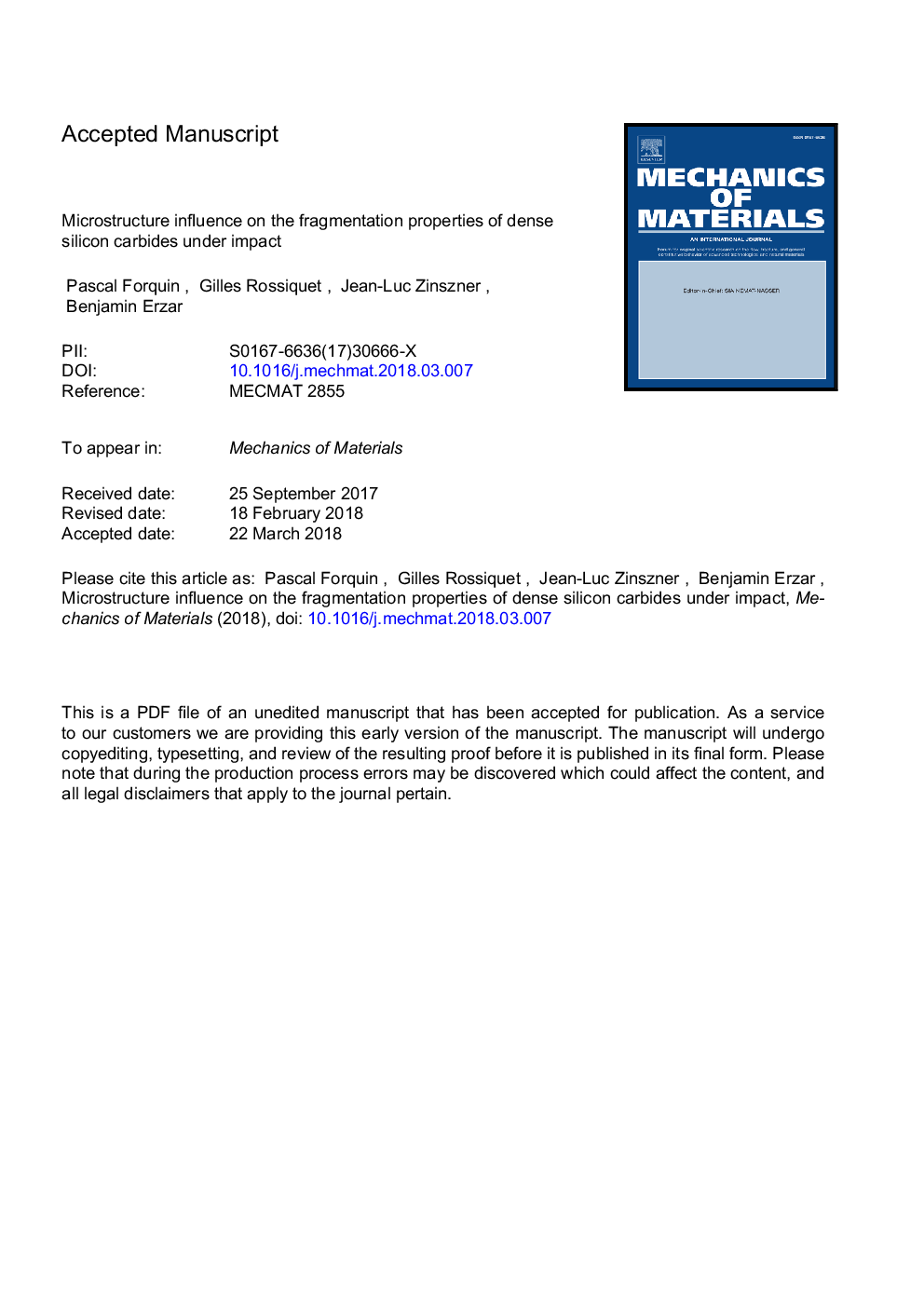| Article ID | Journal | Published Year | Pages | File Type |
|---|---|---|---|---|
| 7178499 | Mechanics of Materials | 2018 | 70 Pages |
Abstract
The impact response of silicon carbide ceramics is a key issue due to the fact that they are increasingly used in lightweight armor solutions. In the present work, four silicon carbides with different microstructural properties are obtained by varying the sintering process (pressureless or spark plasma sintering in liquid or solid state). The dynamic fragmentation activated due to impact is investigated through three specific experiments: Edge-on Impact experiments are conducted in open, and sarcophagus configurations. Additionally, normal impact tests are performed with a sandwich configuration. The damage growth is observed with an ultra-high speed camera (open configuration), and the failure pattern and crack density are analysed by means of post-mortem observations of the recovered specimens after impact, or through an analysis of the fragment-size distribution (sarcophagus and sandwich configurations). The tests highlight the major role of the microstructure on the fragmentation process. The influence of microstructure is examined based on a closed-form analytical solution resting on the Denoual-Forquin-Hild (DFH) damage model. This micromechanical model predicts the fragmentation characteristics of ceramics based on a statistical description of the flaw population. A good correlation between the model predictions and experimental data confirms that the impact response of a ceramic is primarily determined by the flaw population disseminated in its microstructure.
Related Topics
Physical Sciences and Engineering
Engineering
Mechanical Engineering
Authors
Pascal Forquin, Gilles Rossiquet, Jean-Luc Zinszner, Benjamin Erzar,
